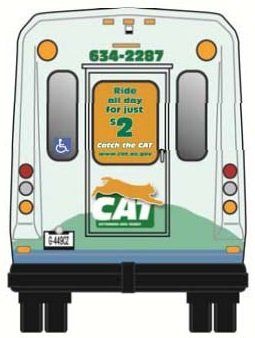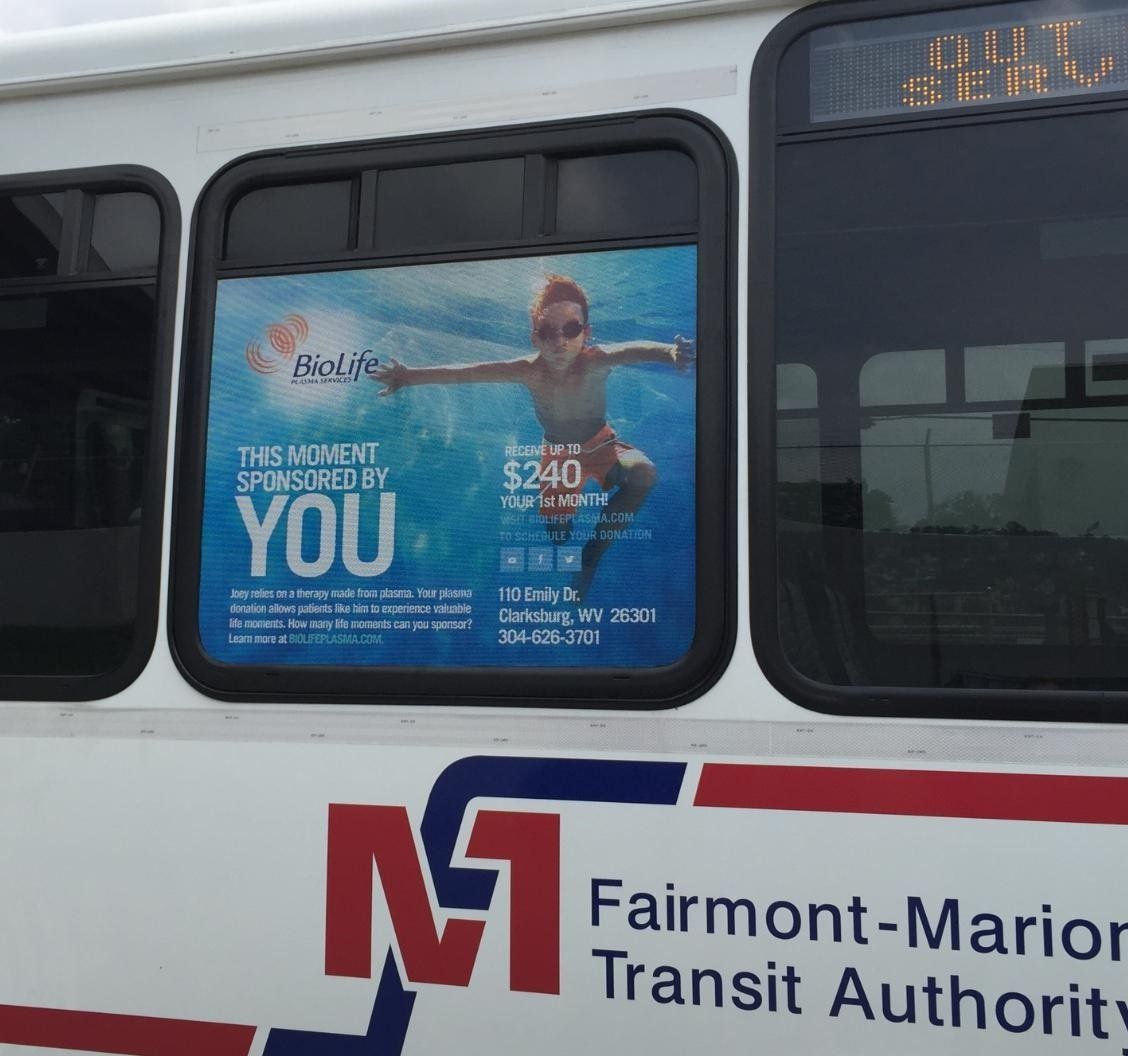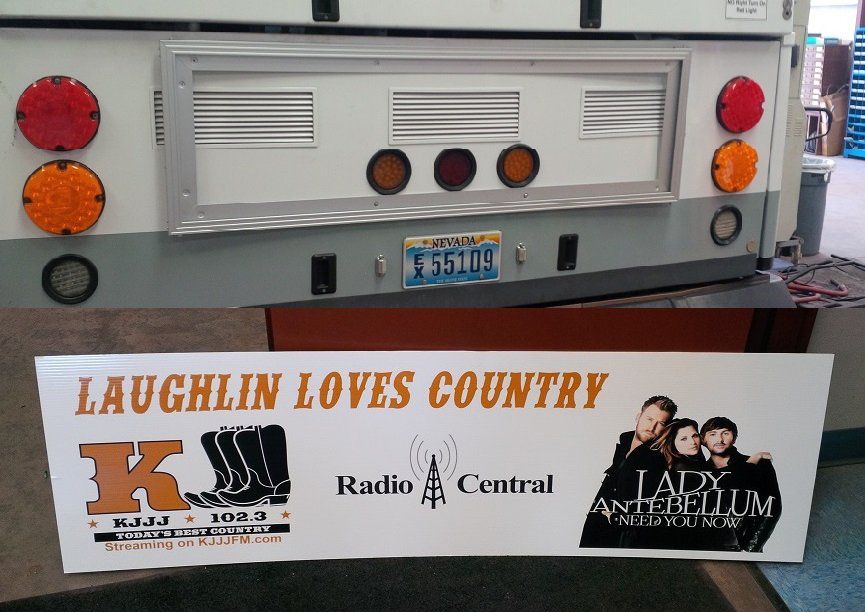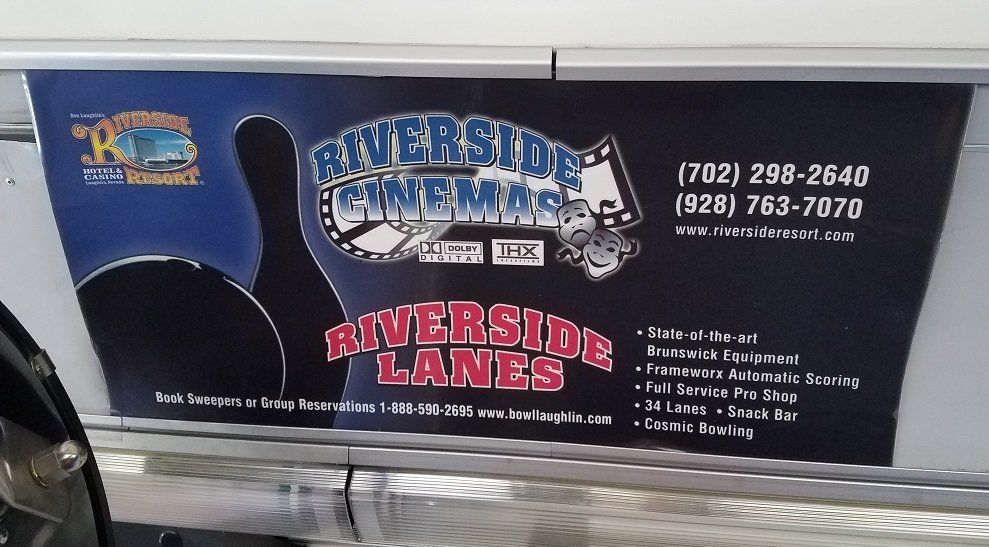Transit advertising is advertising inside buses, on the exterior of vehicles, and at bus shelters. One of the beauties of transit advertising is that the space comes free-of-charge; usually your only expenses are production costs. Utilizing the exterior of your vehicles for your logo and contact information, you can build your brand and raise awareness of the system throughout the community. It’s like a traveling billboard, as you can see in the example on the right.
Transit advertising also can be a source of revenue or a way to highlight local partnerships. Many systems sell ads in the form of full or partial bus wraps. It is important, however, to take into consideration the staff time and expenses of selling and maintaining the wraps and other ads. You may find that using your vehicles to build your own brand is a better use of the space. You also need to take your passengers' experience into account, like making sure they can see clearly out of the windows.








